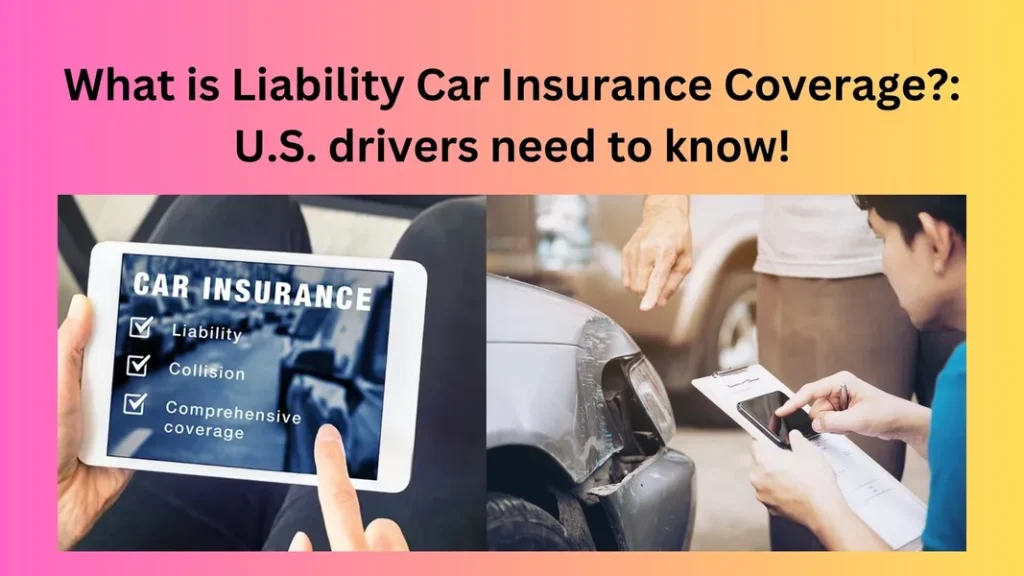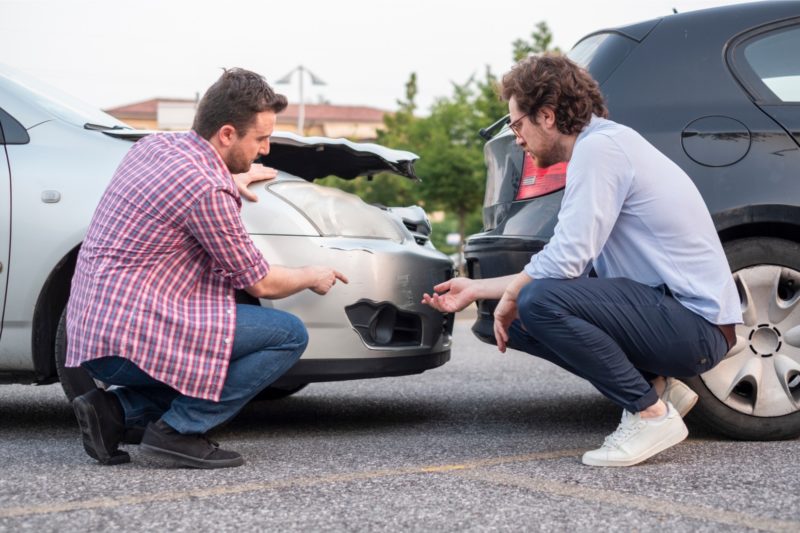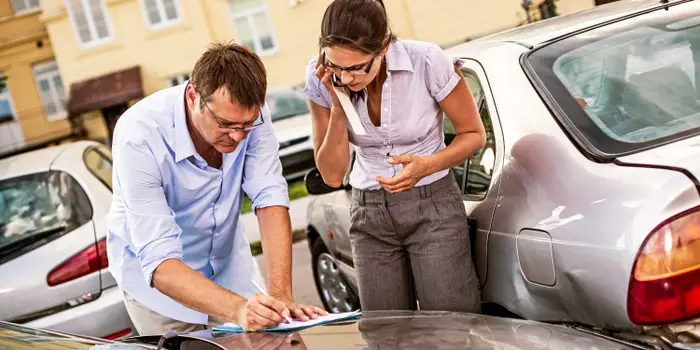Liability car insurance coverage—sounds complicated, right? If you’re like most drivers, you’ve probably heard this term thrown around but might not know what it truly means. Don’t worry, you’re not alone! Liability insurance is one of the most basic and essential types of car insurance, and it’s required in almost every state. So, let’s break it down in simple, easy-to-understand terms. Ready to dive in?

1: Understanding Liability Car Insurance Coverage
Before we dive into the nitty-gritty details, let’s start with the basics. Liability car insurance is the type of insurance that covers the costs if you’re found responsible for an accident. Whether it’s paying for damage to someone else’s property or their medical bills, liability insurance helps keep your wallet intact when accidents happen. But what exactly does it cover?
2: What Does Liability Car Insurance Cover?
When we talk about liability car insurance, there are two main components:
1. Bodily Injury Liability (BIL)
This part of your insurance covers medical expenses, lost wages, and even pain and suffering for the other party if you’re at fault in an accident. For instance, if you rear-end someone and they’re injured, bodily injury liability will help cover their hospital bills and other related costs. It’s like the safety net you never knew you needed!
1: Key Features of Bodily Injury Liability
- Covers medical bills, rehabilitation costs, and other related expenses.
- Can help pay for lost wages if the injured party is unable to work.
- Provides compensation for pain and suffering caused by the accident.
- May cover legal fees if the other party sues you.
2. Property Damage Liability (PDL)
Property Damage Liability covers the cost of repairing or replacing someone else’s property—usually their car—if you’re found at fault in an accident. For example, if you hit someone’s fence or sideswipe a parked car, this coverage steps in to pay for the damage.
1: Key Features of Property Damage Liability
- Covers the cost of repairs or replacement for the other driver’s car.
- Can cover damage to other types of property, like a fence, mailbox, or building.
- Helps prevent you from paying out-of-pocket for costly repairs.
3: How Does Liability Insurance Work?
Alright, you might be thinking, “Great! But how does it actually work when I’m involved in an accident?” Excellent question. Here’s the deal: if you’re responsible for causing an accident, your liability insurance will step in to cover the costs of the other party’s damages—both their injuries and property damage—up to your policy’s limits.
1: Policy Limits Explained
Every liability insurance policy has limits, which is the maximum amount your insurance company will pay. These limits are usually split into two categories:
- Per Person Limit for Bodily Injury: The maximum amount your insurer will pay for injuries to a single person.
- Per Accident Limit for Bodily Injury: The total amount your insurer will pay for all injuries in an accident.
- Per Accident Limit for Property Damage: The maximum amount your insurer will pay for property damage in a single accident.
Let’s say your policy has limits of 50/100/50. This means:
- $50,000 is the maximum amount your insurer will pay for injuries to one person.
- $100,000 is the total your insurer will pay for injuries to everyone in the accident.
- $50,000 is the most your insurer will pay for property damage.
If the costs exceed these limits, you could be responsible for paying the rest out-of-pocket. So, choosing higher limits can give you added peace of mind.

4: Why Is Liability Insurance Required?
Now you might be wondering, “Why do I have to have liability insurance in the first place?” The short answer? It’s the law. In nearly all U.S. states, liability insurance is mandatory. The reason is simple: it ensures that if you cause an accident, you can cover the other person’s expenses.
1: Protecting Everyone on the Road
Liability insurance is designed to protect both you and other drivers. Imagine the chaos if people drove around without insurance—no one would be able to cover the damages or medical bills after a crash. Liability insurance ensures that the roads are a little safer, and it shields you from potentially huge financial consequences if something goes wrong.
2: Minimum Coverage Requirements
Each state sets its own minimum liability coverage limits, so what’s required in one state may differ from another. However, the general rule of thumb is that you need enough coverage to handle the potential costs of an accident.
5: Do I Need More Than the Minimum Liability Coverage?
Just because your state requires minimum liability insurance doesn’t mean that’s all you should get. Accidents can be expensive—much more expensive than the minimum limits required by law. So, should you get more than the bare minimum? Probably.
1: Why Opt for Higher Coverage?
Imagine causing a major accident that results in $200,000 in medical bills, but your policy only covers up to $50,000. Who’s going to pay the difference? You are. That’s why many people opt for higher coverage limits. It’s better to be over-prepared than underinsured when an unexpected accident happens.
2: How Much Coverage Is Enough?
This depends on your financial situation and how much risk you’re willing to take. If you have significant assets, like a home or savings, it’s wise to have higher liability limits to protect them. Experts often recommend 100/300/100 as a solid starting point for coverage.
6: What Liability Insurance Doesn’t Cover
While liability car insurance covers a lot, it doesn’t cover everything. Here’s what it won’t take care of:
1: Your Own Injuries and Vehicle Damage
Liability insurance only covers the other party’s expenses when you’re at fault. If you want coverage for your own medical bills or car repairs, you’ll need additional insurance like collision or comprehensive coverage.
2: Intentional Damage
If you intentionally damage someone’s property (like keying their car), your insurance won’t cover it. Liability coverage is meant for accidents, not deliberate acts.
7: How Much Does Liability Insurance Cost?
The cost of liability insurance varies depending on several factors. But on average, it’s one of the more affordable types of car insurance because it only covers damages to others, not to your own vehicle. Let’s look at what impacts your premiums.
1: Factors That Affect the Cost of Liability Insurance
- Your Driving Record: Safe drivers pay less. If you’ve had accidents or traffic violations, expect higher rates.
- Location: Urban drivers tend to pay more due to the higher likelihood of accidents.
- Vehicle Type: The type of car you drive can impact your premium. Expensive or high-performance cars often come with higher premiums.
- Coverage Limits: The higher your coverage limits, the more your insurance will cost.
- Age and Gender: Younger drivers and male drivers typically pay more due to the higher risk of accidents.
8: How to Choose the Right Liability Insurance Policy
Choosing the right liability insurance can feel overwhelming, but it doesn’t have to be! Here’s a step-by-step guide to help you make the best choice.
1. Assess Your Assets
Take a good look at your assets, including your home, savings, and other valuable possessions. If they’re worth a lot, consider getting higher liability limits to protect them in case of a lawsuit.
2. Compare Insurance Providers
Shop around and get quotes from multiple providers. Prices can vary significantly, and you don’t want to overpay for the same coverage.
3. Check State Requirements
Be sure to meet your state’s minimum coverage requirements, but don’t stop there. It’s a good idea to go beyond the minimum for extra protection.
4. Consider Bundling Policies
Many insurance companies offer discounts if you bundle multiple policies, like car and home insurance. This could help reduce your premium while still providing solid coverage.

9: Can You Be Sued Even If You Have Liability Insurance?
Unfortunately, yes. If the damages exceed your policy’s limits, the other party can sue you for the remaining costs. This is why it’s so important to have enough liability coverage—having a robust policy could prevent a financial disaster.
Conclusion
Liability car insurance coverage is a must-have for every driver. It’s your financial safety net in case you cause an accident and are held responsible for the damages. While your state will dictate the minimum coverage you need, opting for higher limits can save you from significant out-of-pocket expenses. Remember, accidents happen, but being prepared with the right insurance can make all the difference.
FAQs
1. Is liability car insurance required in every state?
Yes, almost all states require drivers to carry liability insurance, though the minimum coverage amounts vary from state to state.
2. Does liability insurance cover my car repairs?
No, liability insurance only covers damage to other people’s vehicles and property. You’ll need collision or comprehensive coverage for your own car.
3. What happens if I don’t have liability insurance?
Driving without liability insurance can result in fines, license suspension, and even legal trouble, depending on your state’s laws.
4. How can I lower my liability insurance premium?
You can lower your premiums by maintaining a clean driving record, opting for higher deductibles, bundling policies, and shopping around for better rates.
5. Can I increase my liability insurance coverage at any time?
Yes, you can adjust your coverage limits at any time. Just contact your insurance provider to make changes to your policy.